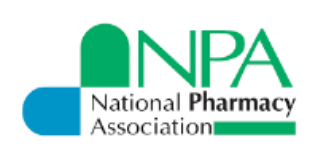-
NHS
-
Oldham Services
-
Shop
-
Help & Advice
Skin conditions can be uncomfortable, embarrassing, and even painful, but the good news is that many common skin issues can be effectively managed with the right treatment. Millions of people in the UK deal with these issues every day, so remember—you’re not alone in your skin struggles.
Whether you’re dealing with a persistent itch, an unsightly rash, or a frustrating breakout, understanding your condition is the first step towards healthier skin.
Skin conditions can be caused by various factors, including:
Diagnosing skin conditions involves examining the physical characteristics of skin irregularities and considering the patient’s medical history. Understanding these causes can help manage skin health, so it’s important to consult a GP or pharmacist for accurate diagnosis and appropriate treatment.
Eczema and dermatitis are terms often used interchangeably to describe a group of conditions that cause inflammation of the skin. Atopic Eczema is the primary cause of skin-related disability and carries the greatest disease burden among skin conditions.
Some symptoms can include:
Managing or attempting to get rid of eczema and dermatitis involves a combination of lifestyle changes and medical treatments:
Acne is one of the most common skin conditions, with over a third of UK adults having suffered from it at some point. While it’s more common in adolescence, acne can persist well into adulthood, causing both physical discomfort and emotional distress.
Acne occurs when hair follicles become plugged with oil and dead skin cells, but there are many different types of acne pimples:
Acne treatment aims to reduce oil production, speed up skin cell turnover, fight bacterial infection, and reduce inflammation. Options can include:
Psoriasis is a chronic autoimmune condition that affects the skin, causing rapid cell turnover and buildup. This results in patches of red, inflamed skin covered with silvery scales. The condition can be itchy and painful and significantly impacts quality of life.
Symptoms include:
While there’s no cure for psoriasis, various treatments can help manage symptoms and improve quality of life:
Cold sores are small, fluid-filled blisters that typically appear on or around the lips. This skin disorder is caused by the herpes simplex virus (HSV), most commonly HSV-1. Once infected, the virus remains in your body for life, occasionally reactivating to cause outbreaks.
Symptoms include:
Cold sores are highly contagious and can spread through close contact, such as kissing or sharing utensils. A weakened immune system, often due to illness or fever, can make individuals more susceptible to cold sore flare-ups.
While there’s no cure for the herpes virus that causes cold sores, several treatments can help manage outbreaks and provide relief:
Contrary to its name, ringworm is not caused by a worm but by a fungal skin infection. It’s a common condition that can affect anyone, regardless of age or gender. Ringworm gets its name from the characteristic ring-shaped rash it often produces. Warm, moist environments promote the growth of the fungus, which is why ringworm often affects areas like the groin, feet, and skin folds.
Symptoms include:
Ringworm is caused by a group of fungi called dermatophytes. It’s highly contagious and can spread through skin-to-skin contact with an infected person or animal, contaminated items like clothing and towels, and walking barefoot through contaminated areas like public showers.
Ringworm is typically treatable with antifungal medications. The choice of treatment depends on the location and severity of the infection:
Scabies is a highly contagious skin infection caused by tiny mites called Sarcoptes scabiei. These microscopic mites burrow into the upper layer of the skin where they live and lay their eggs, causing an intense itching sensation and a pimple skin rash.
Symptoms include:
Scabies are caused by direct, prolonged skin-to-skin contact with someone who already has the skin condition. It can spread quickly through close physical contact in a family, childcare group, or nursing home. The mites can live on a person for as long as 1-2 months, and symptoms may take 4-6 weeks to appear after initial infestation.
Scabies won’t go away on their own and require medical treatment. Treatments can include:
Athlete’s foot is a common fungal infection that affects the skin on the feet. Despite its name, it can affect anyone, not just athletes.
The condition is caused by various types of fungi that thrive in warm, moist environments.
Symptoms include:
Athlete’s foot is highly contagious and can spread through direct contact with an infected person or by touching surfaces contaminated with the fungus. The risk of infection increases when walking barefoot in public areas such as locker rooms, swimming pools, and showers and sharing personal items like towels, shoes, or socks with someone who has it.
Factors that create a favourable environment for the fungus include wearing tight, closed-toe shoes that cause feet to sweat or having minor skin or nail injuries on the foot. These conditions provide a warm, moist environment where the fungus thrives, making infection more likely.
Athlete’s foot can often be treated effectively with over-the-counter antifungal medications. However, persistent or severe cases may require prescription treatments.
At Click2Pharmacy, we understand that skin conditions can be more than just a physical inconvenience – they can affect your confidence and level of well-being. That’s why we’re committed to providing you with the best possible care and support for all your skincare needs.
Our team of experienced pharmacists and our dedicated online clinics can help you understand your symptoms and find the most effective treatments for eczema, acne, cold sores, athlete’s foot, or any other skin condition.

